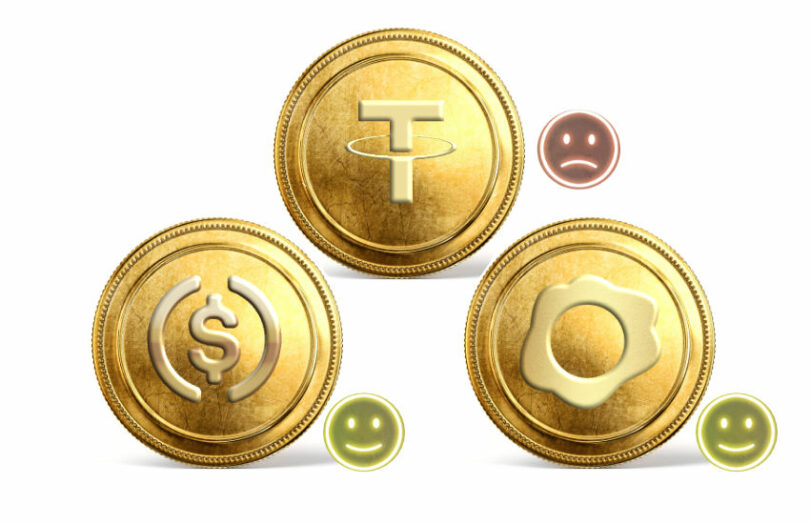Yesterday S&P Global unveiled ratings for eight stablecoins. On a grading out of five, three digital currencies scored a ‘strong’ rating of two – USDC, Pax Dollar (USDP) and Gemini Dollar. PayPal’s stablecoin was not assessed, likely because it’s too new. By far the largest stablecoin by market capitalization, Tether, scored a ‘constrained’ four out of five.
“As we look to the future, we see stablecoins becoming further embedded into the fabric of financial markets, acting as an important bridge between digital and real-world assets,” said Lapo Guadagnuolo, senior analyst at S&P Global Ratings.
“Nonetheless, it’s important to acknowledge that stablecoins are not immune to factors such as asset quality, governance, and liquidity. Our evaluations consider a variety of elements that can cause them to depeg below or above their targeted value.”
Tether was penalized for its lack of transparency and for holding some higher risk assets. The ratings agency highlighted the lack of data regarding custodians, counterparties and bank accounts. Ironically, during a podcast this week, Cantor Fitzgerald revealed it is a custodian of Tether’s U.S. Treasuries. Coindesk reported that Charles Schwab and Fidelity are also custodians. But that’s quite different from Tether disclosing precisely how much is held and where.
USDC and Pax Dollar each scored a ‘two’ for slightly different reasons.
Paxos & Circle’s USDC
Over an extended period, Pax Dollar held a relatively high proportion of cash of around 28%. Given the quality of some banks might vary, Paxos only scored a two rather than a one for asset quality. However, S&P Global liked the Paxos Trust structure, which means the stablecoin reserves are bankruptcy remote. And the fact that it’s directly redeemable.
Turning to USDC, its asset quality scored a one (very strong), particularly because just 9% of assets were cash. Most of that is held at BNY Mellon following the USDC depeg following the collapse of Silicon Valley Bank.
However, S&P adjusted the rating downward because of the USDC structure. Unlike Paxos, Circle chose not to create a trust company, likely because it comes with added legal restrictions. While Circle claims the segregation of assets protects investors in the case of bankruptcy, S&P Global notes that this has not been tested in the courts.
Meanwhile, the accounting body, the American Institute of CPAs (AICPA), recently published proposed criteria for stablecoin reserve disclosures. One issue that’s particularly relevant to Tether is it wants to see the jurisdiction and identity of every reserve asset issuer, custodian and bank account.






